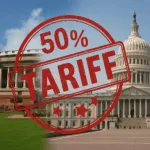“Diversification is the timeless advantage in a changing market.”
While this has been true for decades, investors are now exposed to a whole new frontier of opportunity: digital assets. As the global markets and investment options evolve, people are no longer limited to choices between equities, debt, and gold. While these assets have been beneficial for investors, the actual challenge and evolving landscape now require them to blend direct stocks, ETFs, and Bitcoin in their portfolios.
Direct stocks: The foundation of investor control
The few benefits of investing directly in equities are that it gives investors control through ownership and transparency, but it also has its cons. Concentration risk remains a downside of it. Even blue-chip companies are vulnerable to market cycles, regulatory changes, or disruptive technologies.
Newsletter
Get weekly updates on the newest crypto stories, case studies and tips right in your mailbox.
Any person holding a portfolio that heavily depends on direct equities has to go through troubles like constant fear of downside, especially during volatile periods. The takeaway of investing in direct stocks would be that investors should maintain a balance and avoid single-stock overexposure.
ETFs: Efficiency meets diversification
Exchange-Traded Funds (ETFs) have democratized global investing. ETFs have increased diversification opportunities for investors, as they are now exposed to the S&P 500, Nasdaq, emerging markets, or thematic sectors like clean energy and artificial intelligence.
ETFs offer professional management, liquidity, and lower costs compared to active funds. More importantly, for Indian investors, ETFs provide a convenient gateway to U.S. and global markets.
Adding ETFs to your portfolio can mean that you have efficiently managed to enter into a broader global market spectrum and you are not bound to individual stock risks. They serve as a bridge between risk and efficiency.
Bitcoin: From speculation to a strategic asset
Bitcoin once remained a curiosity, and people often dismissed it as a speculation, but its fate changed. It has steadily emerged as a credible alternative asset for investors.
With the advent of regulated Bitcoin ETFs, investors are now exposed to global markets along with the asset’s safe and compliant benefits. While ETFs are a great way to diversify, they are not here to replace equities or ETFs but are here to unlock new opportunities. Bitcoin’s unique correlation profile, often moving independently of traditional assets, makes it an effective hedge against both
inflation and monetary debasement.
Of course, the volatility is something to keep in mind. But there was also a time when market stock seemed like a risky bet, before becoming mainstream. Quite similarly, Bitcoin has been following an institutional adoption curve.
Let’s say investors don’t want to be overwhelmed with the risk or emotional rollercoaster; they can invest with measured allocation, starting from 2-5 percent of their portfolios.
How to craft a balanced allocation?
As mentioned, relying on one asset might be a very risky move to play. Hence, instead of asking “stocks or Bitcoins,” investors should focus on “how much of each.”
This is not an either/or game but strategic planning. A practical framework should somewhat look like this:
● Core (50–60 percent): Direct equities, focus: quality businesses with long-term
compounding potential.
● Diversifiers (30–40 percent): Global and thematic ETFs, focus: diversified sectors.
● Alternatives (5–10 percent): Bitcoin or crypto ETFs, focus: cautiously sized for
diversification.
The exact mix depends on individual circumstances: investors’ age, goals, risk appetite, and liquidity needs. A retired person may prefer heavier ETF exposure, while young investors can take a shift towards equities and a cautious amount in Bitcoin.
Let’s move from isolated assets to unified strategies.
Investing today is not about choosing between “old” and “new” asset classes but about building synergy. Global investors once hesitated with tech stocks and emerging markets.
Today digital assets stand at a similar crossroads. The smarter question would be: how can Bitcoin and traditional assets complement rather than compete?
Our philosophy is created on the premise that we are simplifying global investing, ensuring that investors feel secure, and embracing innovation with responsible and compliant frameworks.
We believe that the foreseeable future will look great for those who are taking thoughtful and disciplined allocation decisions. Portfolios that neglect digital assets may risk under- diversification, and those that overexpose might face avoidable volatility.
The blueprint of a balanced portfolio
Bridging digital assets with traditional portfolios is no longer a fringe idea; it’s a necessity for forward-looking investors. Direct stocks give ownership, ETFs provide efficiency, and Bitcoin introduces a new dimension of diversification. If investors strategically balance the trio, they could build a portfolio that would stand strong during volatile periods and market shocks as well as create long-term wealth growth.
We have the chance to build a future that brings the best of tradition and adapts to novel and evolving opportunities. For investors, the time to rethink allocation strategies is here!
Srinivas L. is the founder of 9Point Capital, India’s first digital asset management company for HNIs/UHNIs and sophisticated investors.










